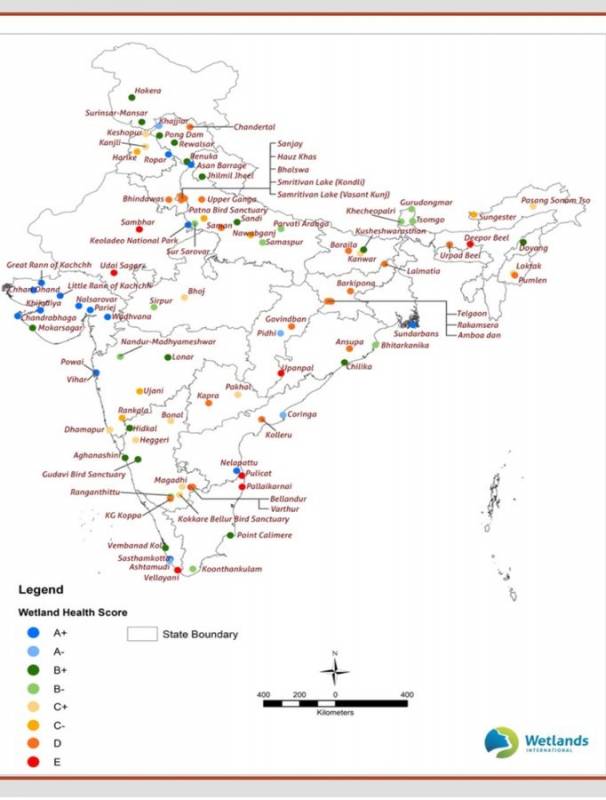Bleak prognosis: Kapra lake tagged 'unhealthy' in Wetland Health Index
By Amritha Mohan
Hyderabad: Lakes in Telangana are ailing. According to the Wetlands Health Index map recently released by the Ministry of Environment, Forest and Climate Change, Kapra lake in Hyderabad stands at grade ‘D’, which comes under the unhealthy category. Pakhal lake is slightly better with a C+ grade.
While the map does not specify the parameters based on which the lake’s health is ascertained, major water bodies such as the Sambhar lake in Rajasthan and Pulicat lake in Andhra Pradesh have been placed under category E, considered to be the most unhealthy.
C Srinivasulu, a Zoology professor at Osmania University, attributed Kapra's ill health to human impact. “Kapra Lake is a highly eutrophic lake. Since it is surrounded by urban conglomerates, it is subjected to an inflow of sewage and domestic wastewater. So, the lake is under pressure of eutrophication and human/livestock disturbance, but holding good biological diversity. However, we cannot come to a sudden conclusion based on the health index since the parameters and methodology of the study need to be ascertained,” he said.
The Pakhal Lake in Warangal district is doing better in the health index primarily due to its location within a forest-agro ecosystem. “The Pakhal lake system made during the British era, wherein low-lying areas were dammed and water is stored and supplied for agricultural purpose. The lake is oligotrophic and relatively safe because of the villages in its vicinity. Whatever pollution that exists in the lake is due to agricultural run-offs, such as pesticide and chemical fertilisers,” said the professor, who has been part of several research studies on lakes in the state.
Lakes in Hyderabad are facing serious problems, as has been highlighted by environmental activists. “The problem with all the lakes in and around Hyderabad is that they are chain-linked lakes. Due to rapid urbanisation, these chains have been destroyed. Hyderabad also does not have its own sewage treatment plant as well as separate sewerage lines. The old Nizam-era sewage lines cannot withstand this heavy influx of sewage. Actually, Hyderabad should have around 534 lakes, of which only 169 are seen,” says Thakur Rajkumar Singh, Human Rights and Consumer Protection Cell.
Thakur also highlights another major problem faced by Hyderabad lakes. “Major pollutants like house detergents encourage the growth of water hyacinth. Water hyacinth thrives on pollutants like detergents,” he said. When allowed to grow excessively, hyacinth reduces the amount of dissolved oxygen in the water, leading to the death of fishes present in a lake. “Only airbreathing fishes survive in lakes like Hussainsagar, which is highly polluted. The gill-breathing fishes, which depend on dissolved oxygen end up dying because there is no oxygen left for them to breath due to presence of water hyacinths,” said the expert.
In the context of the mass death of over 5,000 migratory birds in Sambhar lake, wildlife conservationists opine that lake pollution could also be one of the factors that led to the tragedy. “Sambhar lake is category E, no wonder it led to the mass demise of migrant birds. Need integral management of the environment, forest & wildlife at various levels than current in-silos approach,” tweeted an IFS official regarding the health index.